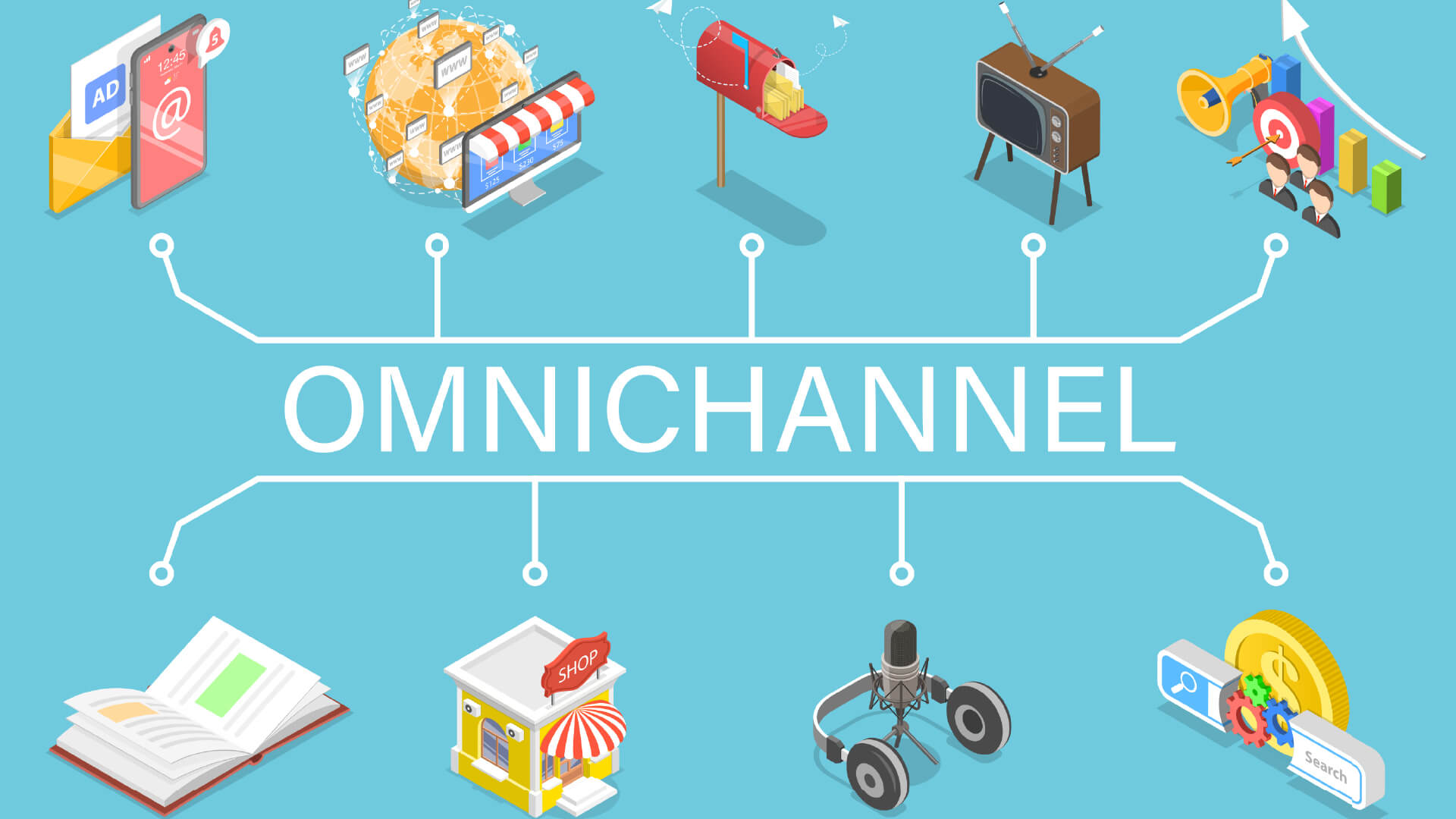By Richard Conn – Senior Director, Demand Generation, 8×8
If you’re a marketing professional, it can sometimes seem that you are constantly juggling tasks and responsibilities. While looking to get your message to customers across multiple channels, you also have to think about factors like dynamic content, targeted marketing, and segmenting your target demographics.
Your marketing aims to improve customer experiences but also to increase conversion rates and sales figures. That could be achieved by enhancing website sales numbers or driving inbound calls to your MS Teams phone, but the end result is the same. All of these goals are now being made more achievable with marketing automation.
When you are juggling, it can be easy to make minor mistakes, but those mistakes can grow into bigger ones if you’re not careful. Omnichannel marketing is essential to reaching impressive conversion rates and, ultimately, future growth, so avoiding errors whenever possible is crucial. In this article, we’ll look at six of the significant omnichannel marketing mistakes to avoid.
What is omnichannel marketing?
In ecommerce, an omnichannel approach seeks to provide a seamless and painless customer shopping journey. This means that the experience should be similar, if not identical, whether the customer is shopping in a physical store, from a mobile device, or from a desktop/laptop. In particular, small businesses can benefit from a mobile marketing strategy.
Implementing an omnichannel approach will provide a rounded and integrated customer experience that encompasses marketing, selling, and customer service no matter what channel the customer is utilizing.
What differentiates omnichannel from multi-channel is that communication options may not be integrated or connected in the latter case. With omnichannel, those communication paths are connected, so you can switch from one to another seamlessly and with no change in quality.
The 6 major omnichannel marketing mistakes to avoid:
1. Picking the wrong channels
People often think that omnichannel marketing involves adopting a strategy that covers every available channel. Or they simply choose the wrong channels to adopt when developing a plan. Both of these are major mistakes that could cost you time and money. You should identify and adopt the channels that your demographic uses.
To use a simple analogy, if you were looking to sell a book entitled ‘call management: your guide to business IP phone systems’, placing a physical ad in a car magazine would be useless. It’s the same with omnichannel marketing; you want to put your content where potential customers are most likely to see it.
The old adage of quality over quantity is one of the golden rules of omnichannel marketing. You need to spend some time identifying where most of your target audience ‘congregates’. If your demographic audience is mainly Generation Z- those between 6 and 24 years old- then your primary focus will be on the platforms they interact with most. If your customers are based in New Zealand look to buy co.nz domains for your brand. The important thing is to be where your audience is.
2. Poor content
Content is king and will continue to be for the foreseeable future. And if your approach to omnichannel content is to produce one piece of content and replicate it across all the channels you use, then it’s time to rethink your strategy. Poor, repetitive content will lead to customers losing interest quickly and could result in your bounce rate soaring.
We know that some 80% of consumers prefer a degree of personalization when it comes to the marketing content they view. The ‘one size fits all’ approach to creating content is not only outdated but will cost you customers and, therefore, revenue. And your customers are using multiple channels and platforms, including social media, apps, etc., to interact with your business.
This includes their communication with customer support. An omnichannel approach should allow your support team access to every platform with which the customer interacts. Familiarizing staff with all of these platforms, as well as the anatomy of an awesome customer support email and automated dialer for outreach, is essential.
To power your omnichannel campaign with personalization, you need to think about adaptive content. And that means using the data you have on your customer targets to customize the messages they see. That involves customizing and adapting your messages based on the channels they are using, their physical location, their gender, etc. Understand your customers, know what touchpoints they use, and make your content as relevant as possible.
3. Poor KPI measuring
KPIs are far more than just numbers you look at weekly or monthly. They are crucial metrics that let you monitor and analyze your business’s health and performance as a whole and how particular strategies or campaigns are working. They allow you to make tweaks and adjustments to improve results in the future.
Your metrics are not just about conversion rates and sales. They should be giving you information about every stage of a customer journey and their satisfaction with those stages. And it’s not just about measuring satisfaction with the overall experience but with each component of the experience. There are three main stages to that customer journey:
- Awareness: the customer realizes they have a need or issue. For example, they know they need to replace their television.
- Consideration: the customer begins to look at the different options available to them (what products are on the market that suits their needs).
- Decision: the customer identifies the solution and moves to purchase.
Each stage in that journey needs to be measured for effectiveness. Every part may also feature different marketing approaches and content to target the buyer. By segmenting the journey and analyzing your marketing’s effectiveness in each segment, you identify what works and what doesn’t and can make adjustments where needed.
4. Failure to learn
In life, most of us try to learn from our mistakes to improve our future performance. Yet this is something many omnichannel marketers fail to do. If it’s your first time using an omnichannel marketing strategy, it’s unlikely you will get things perfect immediately.
If you make an error, take ownership of it and see what went wrong so you can adjust that particular area or component. Mistakes can be made in how you’ve targeted a segment, if you’ve selected ineffective content, etc. But seeing the data that highlights mistakes and taking positive action based on that data will put you back on the right path.
Many marketers lack the ability to transfer data that points out flaws and errors into action that improves results. It’s a case of recognizing mistakes and acting to rectify them, and being brave enough to experiment as you develop your omnichannel strategy. Not all your experiments will work, but you won’t know if you don’t try!
And when you get things right, everything should fall into place. Once you create excellent marketing strategies and content, provide efficient customer journeys and order fulfillment, you can’t help but increase sales figures and revenue.
5. Lack of cohesion
Your marketing is not just about one specific product. It’s about your company’s vision, mission, values, and attitudes. Customers will show brand loyalty based on those factors, so you must give consistent and cohesive messages across all channels. Where there is a lack of cohesion, customers may choose to look for other brands and products.
There is also an element of trust that comes with cohesive messaging. You can’t make a claim about product A on one channel and then make a contrary claim about the same product on a different channel. Consistency is key to establishing that relationship of trust that leads to ongoing brand loyalty and customer retention.
Losing cohesion can be an easy mistake to make when looking at different demographic segments and utilizing different channels. But you should focus on providing as similar and seamless an experience as possible across any channel your customer chooses to interact with you on.
6. Implementation
For many companies, they may only just be making their first foray into an omnichannel approach. So it comes as little surprise that many make costly mistakes in their initial implementation stages and may even make ongoing mistakes as they try to get things right. Making that switch from single or low number channel marketing can be difficult.
Many of the issues that arise with implementing omnichannel marketing come from organizational structure and silos that find it difficult to move from traditional marketing. Many marketers find it hard to manage the ever-growing list of new channels they must include in their strategy.
One way to get past implementation issues is to center your efforts and focus on the customer journey and experience. Looking at the matter from a customer’s perspective and recognizing their persona and behavior will make it easier to proceed with new implementation or adjusting existing strategy.
And implementation should not only be considering existing and new customers. Most companies will have a number of inactive customers in their database, people who have not bought anything in some time. Knowing how to win back inactive customers is another factor you should consider.
The takeaway
As ecommerce continues to develop, there are many important factors for us to consider and integrate. Tactics to attract and retain customers can range from providing a 1800 number to offering free shipping. And small businesses can save money by using free website builders to create their online portal.
Companies now have to take a 360-degree approach to everything they do. And omnichannel marketing will continue to be another crucial component of success.







